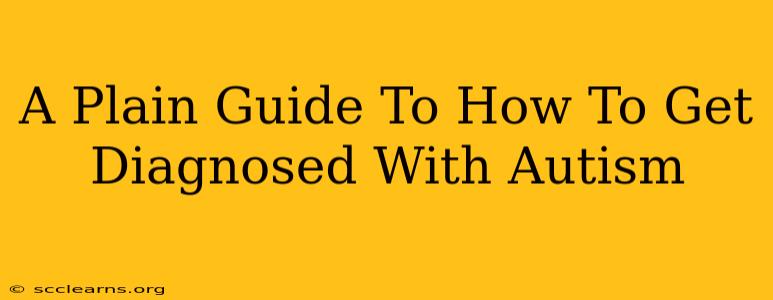Getting a diagnosis for autism spectrum disorder (ASD) can be a significant step in understanding yourself or your child better. This guide offers a straightforward approach to navigating the diagnostic process.
Understanding the Autism Spectrum
Autism spectrum disorder isn't a single condition but a range of conditions characterized by differences in social interaction, communication, and behavior. These differences can manifest in diverse ways, making diagnosis crucial for tailored support and interventions. Early diagnosis is particularly important, enabling access to crucial resources and therapies from a young age.
Common Signs of Autism
While a professional diagnosis is necessary, recognizing some common signs can prompt you to seek evaluation. These may include:
- Social Communication Challenges: Difficulty with eye contact, understanding social cues, engaging in reciprocal conversations, or forming relationships.
- Repetitive Behaviors: Engaging in repetitive movements (e.g., hand flapping), routines, or fixations on specific interests.
- Sensory Sensitivities: Extreme reactions to sounds, lights, textures, or tastes.
- Communication Differences: Delays in language development, unusual language patterns, or challenges understanding nonverbal communication.
It's vital to remember that these signs can vary greatly in intensity and presentation across individuals. What might be a noticeable issue for one person could be subtle for another.
The Diagnostic Process: Steps to Take
The diagnostic process typically involves several steps:
1. Finding a Qualified Professional
This is the most crucial step. Seek out professionals specializing in diagnosing ASD in adults or children, depending on the age of the individual. These include:
- Developmental Pediatricians: Particularly skilled in diagnosing children.
- Clinical Psychologists: Experienced in conducting comprehensive assessments.
- Psychiatrists: Can also diagnose and may offer medication management if needed.
Do your research! Check professional qualifications, reviews, and experience with ASD diagnoses.
2. The Assessment
The assessment will involve gathering information through different methods:
- Clinical Interviews: Discussions with the individual and their family or caregivers about their history, behaviors, and challenges.
- Observation: Observing the individual's behavior and interactions in various settings.
- Standardized Assessments: Utilizing specific tests designed to measure social communication, cognitive abilities, and adaptive behavior.
Be prepared to provide detailed information about the individual's history, behavior, and any concerns. The more information provided, the more accurate the assessment will be.
3. Diagnosis and Next Steps
Once the assessment is complete, the professional will provide a diagnosis and discuss the implications. This might include recommendations for:
- Therapy: Behavioral therapy, speech therapy, occupational therapy, or social skills training.
- Educational support: Special education services or individualized education programs (IEPs).
- Support groups: Connecting with other families or individuals with ASD.
Overcoming Barriers
Accessing diagnostic services can sometimes present challenges:
- Long wait times: Be patient and persistent in seeking appointments.
- Cost of assessments: Explore options for insurance coverage or financial assistance.
- Geographical limitations: Consider telehealth options for remote assessments.
Advocating for yourself or your loved one is essential. Do not hesitate to seek second opinions if needed, and remember that a diagnosis is a tool for understanding and accessing support.
Living with an Autism Diagnosis
Receiving an autism diagnosis isn't the end of the journey, but rather a beginning. It's an opportunity to access resources and support tailored to your individual needs. This includes connecting with support groups, learning strategies for managing challenges, and celebrating the unique strengths and talents often associated with autism. The autism community is supportive and resourceful – embracing the diagnosis can lead to a more fulfilling and meaningful life.

